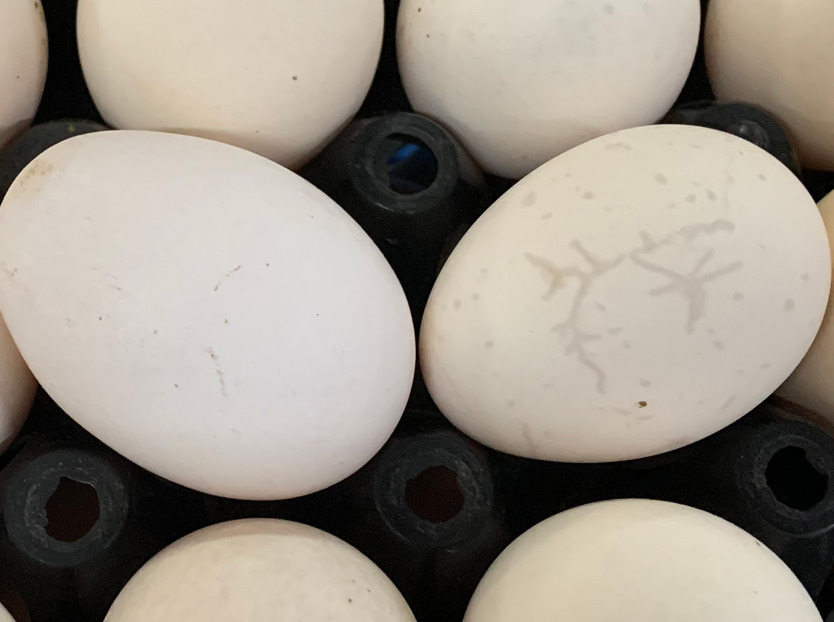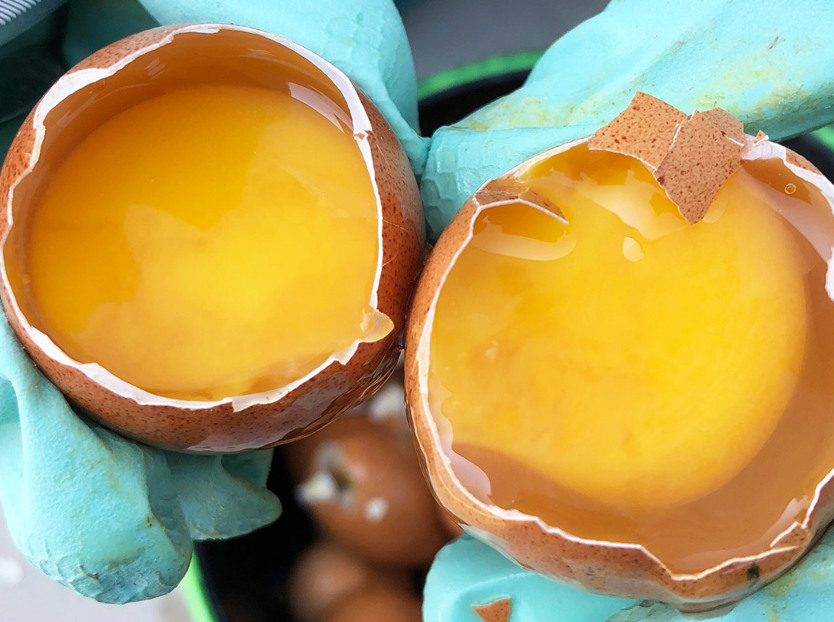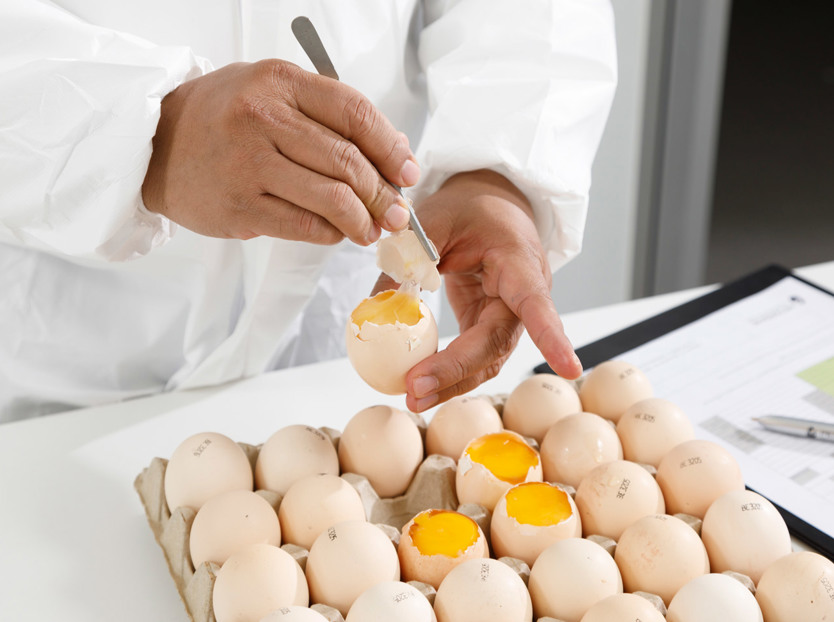After take-off on hatch day, day-old chicks are stored for a period of time before being moved to the farm. Chick storage time can vary considerably, from just a couple of hours to an overnight stay. A sound understanding of the principles involved in storing chicks is vital to preserve chick quality and performance and ensure the well-being of the chicks. This article explains these principles and highlights good chick holding conditions.
1. Logical unloading of the hatcher avoids overheating
The hatcher itself is a very good holding environment for chicks as it is designed to have a very tightly controlled and stable environment with a lot of cooling and a forced airflow. But of course, chicks cannot stay in the hatcher forever as they need to be separated from the eggshells and any unhatched eggs.
The moment you pull the trolleys from the hatcher, the airflow surrounding the day-old chicks will be reduced to whichever airflow you have in the area you move them into. Therefore, it is essential you avoid pulling all trolleys from the machine at once because this can lead to overheating of the chicks and subsequent dehydration. When pulling the trolleys from the hatcher, the best thing to do is pull in such an order that the last trolley in the machine is always the one closest to the temperature probe, to avoid overheating of the remaining baskets.
2. Maintaining an appropriate ambient temperature is vital
After separation from eggshells and further processing, you will have to store the day-old chicks in the chick storage room for a period of time.
Hatchlings are unable to regulate their body temperature in the first weeks of their life. They rely on the ambient temperature to stay in perfect shape.
During storage, the internal temperature of the birds should remain between 39.5°C and 40°C (103°F and 104°F). When the bird is at this temperature, it will breathe through the nostrils limiting the amount of moisture loss to around 2 grams per 24 hours. At this rate, birds can be held very comfortably for extended periods of time.

The ideal chick storage room temperature varies, depending on the air speed. Generally speaking, 24°C-26°C (75°F-79°F) with a constant airflow and supply of oxygen-rich air results in comfortable chicks. Lower temperatures require slower air speeds and higher temperatures require higher air speeds.
Behaviour as an indicator
Vent temperatures give a very accurate reading of a bird’s temperature, but are invasive, time-consuming and only inform you of the conditions in the area you are monitoring at the time of measurement (conditions can change very quickly). Therefore, the behaviour of the birds is a far better and proactive indicator of their comfort levels.
Up until today, the Romijn and Lokhorst observation (as shown in the table below) is by far the easiest, quickest and most effective way to determine chick comfort.
Romijn and Lokhorst observation of chick behaviour
|
||
|
Box temperature |
Body temperature |
Behaviour |
|
40-44 |
44-45 |
Unconscious and die |
|
38-39 |
42-43 |
Heavy panting, strong chirps |
|
37-39 |
41-42 |
Beaks open, quick breathing |
|
33-38 |
40-41 |
Walking, spreading of wings |
|
30-36 |
39.5-40 |
Normal, quiet |
|
26-34 |
38.5-39.5 |
Some huddling, soft chirping |
|
22-33 |
37-38 |
Most chickens huddle to warm side of box |
|
18-30 |
36 |
Chilled, droopy |
Don’t place chick boxes directly onto the floor to avoid influence from the floor temperature (and to ensure the boxes do not get wet). If you run out of trolleys and you cannot avoid placing boxes directly onto the floor, you can place one empty chick box at the bottom. It is also advisable to pull the boxes rather than to push them, to prevent possible tipping of the stack.
3. Two more critical factors to control: airflow and oxygen

It is critical that the air coming into the chick holding room passes through the birds and not just bypasses the boxes. As a general rule of thumb: space the chick boxes out with the space of one empty box along the longest side to allow enough airflow (this can be decreased with higher air speeds). Also, avoid too much turbulence inside the room as this will create a lot of chick fluff in the air.
Another critical factor in storage, besides airflow, is oxygen. There must be sufficient oxygen in the room with a constant exchange of fresh air. The levels should never drop below 20%. Recycling air is not advised in chick rooms as filters become blocked quickly. During replacement, some fluff inevitably ends up in the ducting, which makes the system extremely difficult to clean. Carbon dioxide sensors are useful to make the system fail-safe. However, the birds will usually start to overheat long before they start to run out of oxygen.
4. What to know about lighting and feeding?
Day-old chicks are naturally very inquisitive. They want to investigate their surroundings and bright lighting activates this behaviour. Low-level dark blue lighting has a calming influence, resulting in the birds falling asleep and saving precious energy. When asleep, the birds also sit lower in the boxes, ensuring greater airflow through the boxes. Meanwhile, staff can see enough to move around safely.
If you have to hold your birds for prolonged periods of time, you can give them a supplement but it must be considered that if fed, they will need bright lighting which will activate them. After eating, their metabolism will increase, producing twice as much heat as when they are sleeping.
In summary
Air/box temperature, airflow and oxygen play an important role in keeping the environment of day-old chicks in the right conditions. These conditions deserve your attention as they are vital to preserve chick quality and performance and ensure chick welfare.
Technology can help you to ensure that every chick gets the same ‘ideal storage treatment’. Petersime’s Chick-Store machine is specifically designed to automatically deliver the perfect storage environment. Please don’t hesitate to contact us for more information.



